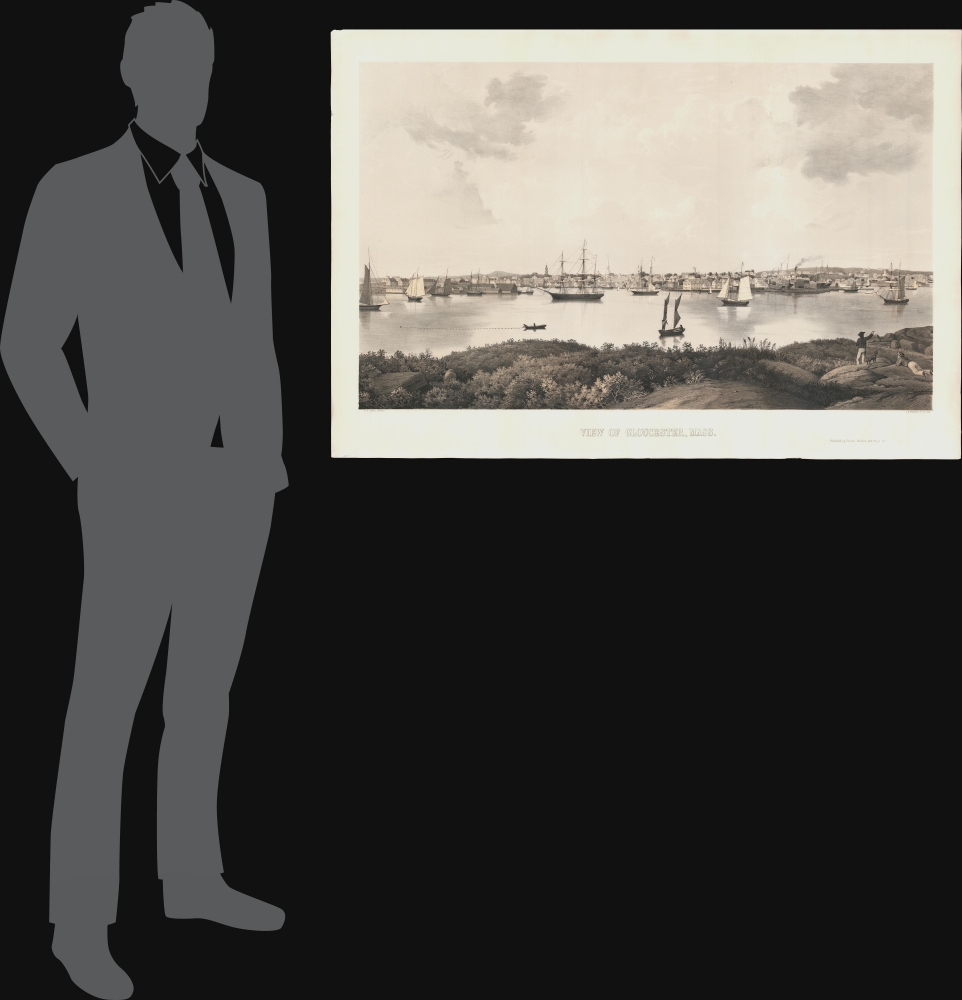Digital Image: 1859 Fitz Henry Lane View of Gloucester, Cape Ann, Massachusetts
GloucesterView-lane-1859_d
Title
1859 (undated) 27 x 39 in (68.58 x 99.06 cm)
Description
FOR THE ORIGINAL ANTIQUE MAP, WITH HISTORICAL ANALYSIS, CLICK HERE.
Digital Map Information
Geographicus maintains an archive of high-resolution rare map scans. We scan our maps at 300 DPI or higher, with newer images being 600 DPI, (either TIFF or JPEG, depending on when the scan was done) which is most cases in suitable for enlargement and printing.
Delivery
Once you purchase our digital scan service, you will receive a download link via email - usually within seconds. Digital orders are delivered as ZIP files, an industry standard file compression protocol that any computer should be able to unpack. Some of our files are very large, and can take some time to download. Most files are saved into your computer's 'Downloads' folder. All delivery is electronic. No physical product is shipped.
Credit and Scope of Use
You can use your digial image any way you want! Our digital images are unrestricted by copyright and can be used, modified, and published freely. The textual description that accompanies the original antique map is not included in the sale of digital images and remains protected by copyright. That said, we put significant care and effort into scanning and editing these maps, and we’d appreciate a credit when possible. Should you wish to credit us, please use the following credit line:
Courtesy of Geographicus Rare Antique Maps (https://www.geographicus.com).
How Large Can I Print?
In general, at 300 DPI, you should at least be able to double the size of the actual image, more so with our 600 DPI images. So, if the original was 10 x 12 inches, you can print at 20 x 24 inches, without quality loss. If your display requirements can accommodate some loss in image quality, you can make it even larger. That being said, no quality of scan will allow you to blow up at 10 x 12 inch map to wall size without significant quality loss. For more information, it is best consult a printer or reprographics specialist.
Refunds
If the high resolution image you ordered is unavailable, we will fully refund your purchase. Otherwise, digital images scans are a service, not a tangible product, and cannot be returned or refunded once the download link is used.
Cartographer S
Fitz Henry Lane (December 19, 1804 - August 13, 1865) was an American artist, viewmaker, and lithographer active in the middle part of the 19th century. Lane's was born in Gloucester, Massachusetts and given the birthname Nathaniel Rogers Lane. Lane's family were prominent on Cape Ann, where Lanesville and Lanes Cove are named in their honor. Lane is known to have been handicap, but the nature of his impairment is unknown save that he could walk only with a crutch. He worked various jobs and in 1830, was identified as a shoemaker. His first known painting, Burning of the Packet Ship 'Boston' is dated to this same year. In 1831, Lane formally changed his name to Fits Henry Lane - the reasons are unclear. In 1832, he relocated to Boston, where he took an apprenticeship under William Pendleton, at the Pendleton Lithography Firm, founded by William and John Pendleton. The Pendleton Firm, one of America's first lithographers, provided a unique training opportunity for young artists. Most of its artists were not formally educated, but at Pendleton received art training as well as lithographic training. At Pendleton he completed his first major lithograph, the 1836 View of the Town of Gloucester, Mass., a significant piece praised both for its beauty and accuracy. In 1841 he struck out on his own, promoting himself as a marine painter. He also established partnerships with J. W. A. Scott and, in 1845, Keith and More. Lane successfully exhibited his painting at the American Art Union, the Boston Athenaeum, and at the Boston Artists’ Association. He returned to Gloucester in 1846 and in 1849, acquired a property on Duncan's Point. By this time, he was a prosperous and well-respected artist with an active following. While most of his early work focused on Gloucester, around 1849 he began traveling to Maine and produced maritime paintings there as well. Lane remained in Gloucester for the remainder of his days, producing a large corpus of work, and was prominent both socially and politically. More by this mapmaker...
Lodowick Harrington Bradford (November 10, 1820 - December 13, 1885) was a Boston based engraver lithographer active in the second half of the 19th century. Bradford was born in Boston, Massachusetts. He studied as a line engraver before transitioning to the then new art of lithography. He even invented his own photolithographic ambrotype process that created a durable photographic picture on lithographic stone. In 1849 he partnered with Ebenezer Tappen (1815 - 1854) to form the Boston firm of Tappan and Bradford. The partnership remained active until Tappan's untimely death in January, 1854. From 1854 to 1859 Bradford continued to operate the firm, but the imprint changed to 'L. H. Bradford and Company.' It is not clear who the 'and Company' was, possibly Tappan's heirs? From late 1859 until his 1870, he printed under 'L. H. Bradford.' His last known lithographs appeared in 1860, but he did continue copper and steel engraving until his death. Bradford was married to Martha Brown, from an old Gloucester Family. After his wedding in 1849, he divided his time between Gloucester and Boston. In Gloucester he made the acquaintance of the local painter Fitz Henry Lane (1804 - 1865) and worked with him to produce several views in the 1850s. He died on the road between Boston and Gloucester in 1885. Learn More...




